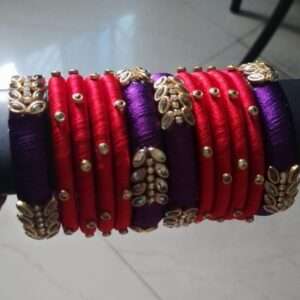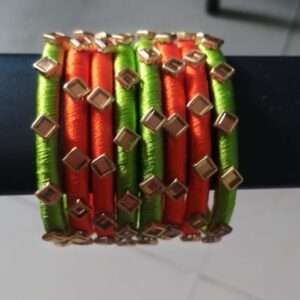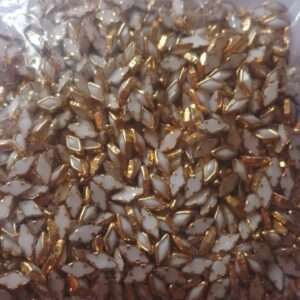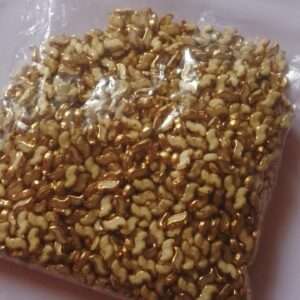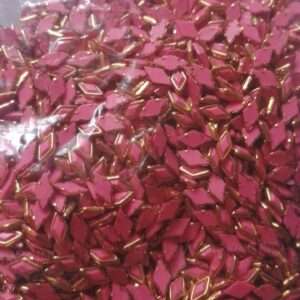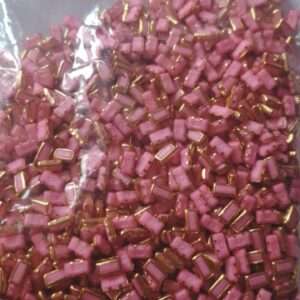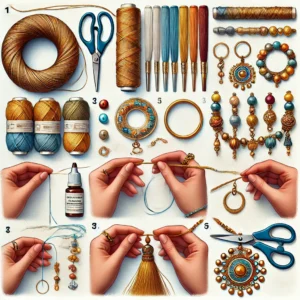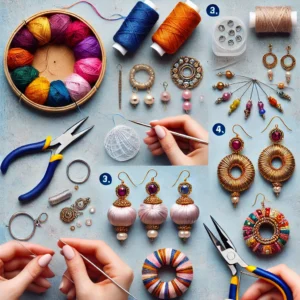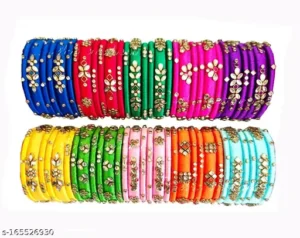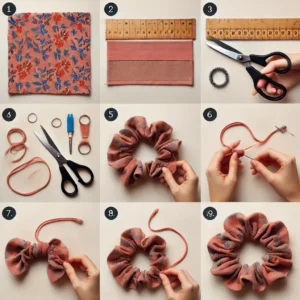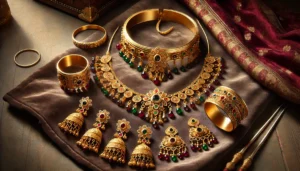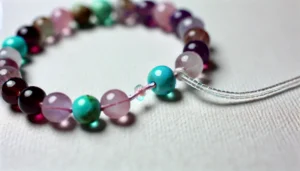Home » Posts tagged '#CulturalHeritage'
Tag Archives: #CulturalHeritage
Discover the Rich Significance Behind the Ornaments Worn by Indian Women!
Explore the various traditional ornaments worn by Indian women and their cultural significance. From Maang Tikka to Anklets, discover the beauty and tradition behind each piece.
Indian culture is renowned for its rich tradition of jewelry and ornaments, which are often seen as symbols of beauty, status, and spirituality. Indian women have adorned themselves with various types of jewelry for centuries, each piece carrying cultural, religious, or social significance. The types of ornaments vary across different regions, but they share a common essence of elegance and heritage. This article explores various traditional ornaments worn by Indian women and the significance behind each piece.
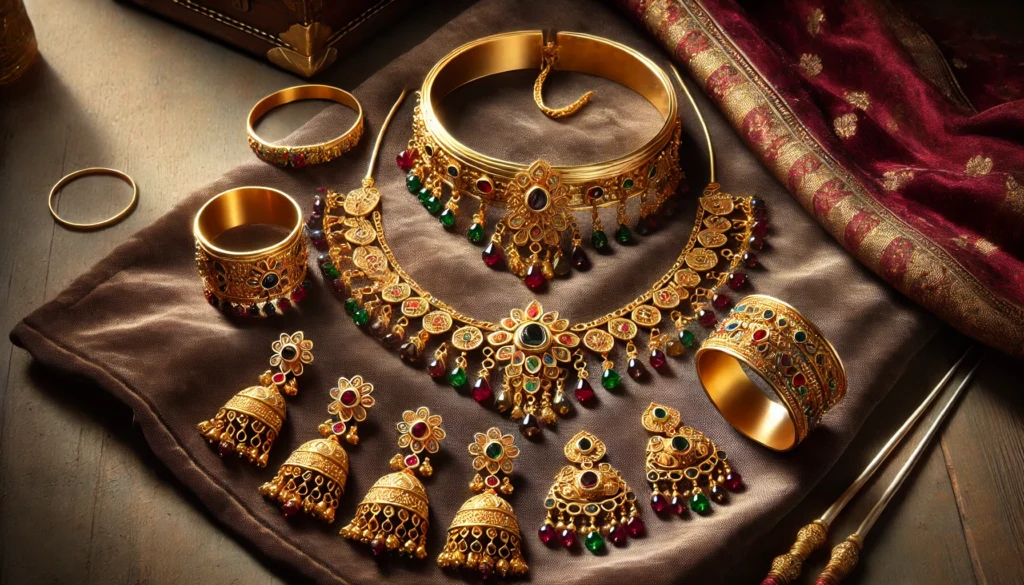
1. Maang Tikka
Description: Maang Tikka is a forehead ornament worn along the parting of the hair, extending to the forehead. It typically consists of a chain with a pendant, and in some cases, a small hook at the back to secure it to the hair.
Significance: Maang Tikka is considered a symbol of feminine power and protection. It is usually worn during weddings and festive occasions. In Hindu tradition, the center of the forehead, where the pendant rests, is believed to be the ajna chakra, or the third eye, representing wisdom and power.
2. Earrings (Jhumkas, Studs, Chandbalis)
Description: Earrings come in various styles, such as Jhumkas (bell-shaped), Studs, and Chandbalis (moon-shaped). They can be made from gold, silver, pearls, or gemstones.
Significance: Earrings are believed to be an important part of a woman’s adornment in India. Jhumkas and Chandbalis are especially popular in South Indian and Mughal-inspired jewelry. They are worn to enhance facial features and are often seen as a mark of traditional beauty.
3. Nose Ring (Nath)
Description: The Nath, or nose ring, is a traditional ornament worn on the nose. It can be a small stud (Phulli) or a large ring (Nath) adorned with pearls or stones, sometimes extending to the ear with a chain.
Significance: The Nath holds immense cultural importance, especially in Indian weddings, where it symbolizes a married woman. It is also considered a mark of beauty and femininity. In Ayurveda, the left nostril is believed to be linked to reproductive organs, and piercing it is said to ease menstrual and childbirth pain.
4. Necklaces (Haar, Mangalsutra, Choker)
Description: Necklaces come in various types, such as the long Haar, the sacred Mangalsutra, and the short Choker. They can be crafted from gold, silver, pearls, or other precious stones.
Significance: Necklaces symbolize prosperity and marital status. The Mangalsutra, a black-beaded necklace worn by married Hindu women, is particularly significant as it represents the husband’s longevity and the sanctity of marriage. Chokers and Haars, on the other hand, are worn for their ornamental and aesthetic value.
5. Bangles (Kangan, Chuda)
Description: Bangles, known as Kangan or Chuda, are worn around the wrists. They are typically made of gold, glass, lac, or other metals and are available in various designs, from simple to heavily embellished.
Significance: Bangles are a symbol of prosperity, marital status, and good fortune. For married women, especially in North India, wearing red and white bangles (Chuda) is considered auspicious. Bangles are also believed to enhance blood circulation due to the constant friction against the wrist.
6. Armlets (Bajubandh)
Description: Armlets or Bajubandhs are worn around the upper arm. They are usually made of gold or silver and adorned with gemstones, pearls, or intricate designs.
Significance: Armlets are worn to symbolize strength and protection. In Indian culture, they are often associated with divine protection and are worn by brides and dancers during special ceremonies and performances.
7. Rings (Anguthi)
Description: Rings, or Anguthis, are worn on the fingers and come in various designs, from simple gold bands to elaborate pieces with gemstones and diamonds.
Significance: Rings are often associated with marital status, especially the engagement and wedding rings. In Indian culture, different fingers have different significances, and rings are believed to enhance particular qualities, such as creativity, love, or prosperity.
8. Waist Belt (Kamarbandh)
Description: Kamarbandh or waist belts are worn around the waist and can be made of gold, silver, or cloth adorned with beads and stones. They often have chains, tassels, or hanging charms.
Significance: Kamarbandhs are worn to accentuate the waistline and add grace to the woman’s gait. Traditionally, they are believed to help maintain posture and balance while walking or dancing. They are a popular accessory during weddings and classical dance performances.
9. Anklets (Payal) and Toe Rings (Bichiya)
Description: Anklets, or Payals, are worn around the ankles, often accompanied by small bells that make a melodious sound. Toe rings, or Bichiyas, are worn on the toes, usually the second toe, and are often made of silver.
Significance: Anklets are considered to attract positive energy and ward off negative influences. Toe rings are traditionally worn by married Hindu women and are believed to enhance reproductive health by applying pressure to specific nerve points.
10. Hair Ornaments (Jadai Billai, Veni, Parandi)
Description: Hair ornaments, such as Jadai Billai (hairpins), Veni (flower decorations), and Parandi (braid tassels), are used to adorn hairdos. They are often crafted from gold, silver, or colorful threads.
Significance: Hair ornaments are a significant part of bridal jewelry in India, symbolizing beauty and femininity. They are also used in classical dance forms to accentuate movements and enhance the overall aesthetic appeal.
Ornaments worn by Indian women are more than just decorative accessories; they carry deep cultural, religious, and social significance. From the Maang Tikka that represents wisdom to the Toe Rings believed to promote health, each piece of jewelry is steeped in tradition and meaning. Indian jewelry not only enhances a woman’s beauty but also connects her to her cultural roots and spiritual beliefs.
Discover the unexpected comeback of ancient beadwork and beaded jewelry traditions that are turning heads!
Uncover how ancient beadwork and beaded jewelry traditions are making a vibrant comeback. Learn why these intricate pieces are capturing modern fashion.
Beadwork and beaded jewelry are experiencing a surprising resurgence, with contemporary fashion circles embracing this ancient art form in unexpected ways. Once relegated to traditional attire and cultural events, beadwork is now making bold statements on global runways and modern accessories. This vibrant craft is not just about decoration; it is a reflection of cultural heritage, artistic expression, and sustainable fashion. The revival of beaded jewelry aligns with a broader trend of returning to handcrafted, unique items that tell a story beyond the mass-produced world of fast fashion.
The History and Cultural Significance of Beadwork
Beadwork and beaded jewelry have deep historical roots, tracing back thousands of years across various cultures, from African tribes to Native American communities, and even ancient Egyptian societies. Each bead, whether made from bone, shell, glass, or gemstone, carried meaning and purpose, representing status, spirituality, or cultural identity. Beadwork was not only an artistic endeavor but also a societal marker.
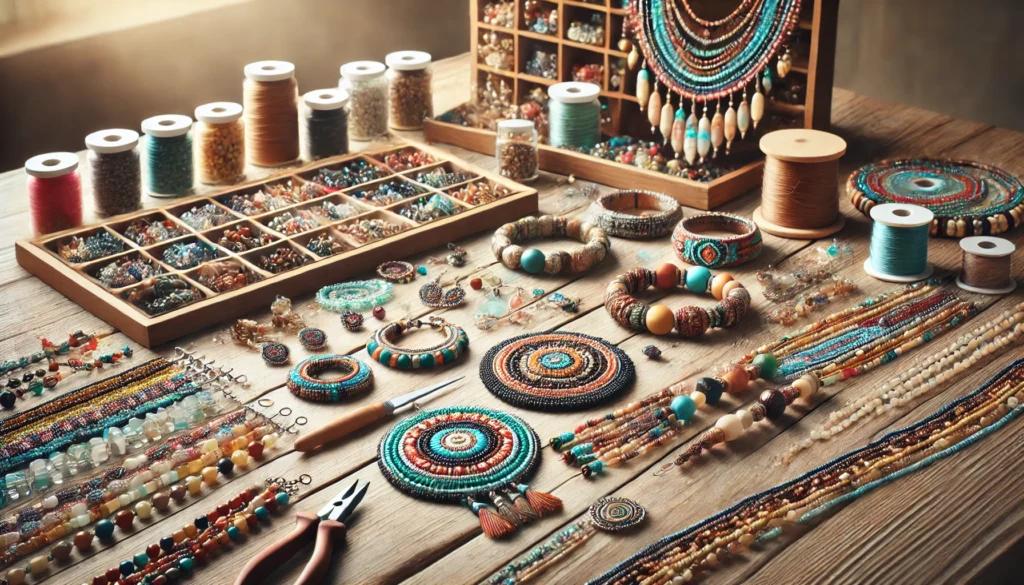
According to historians, beadwork served as a medium of communication and expression, with patterns and colors holding specific meanings. Beadwork expert Carol Wilcox noted that beads have been considered “an essential part of human expression, similar to language or music.” Today, modern artisans are reviving these ancient practices, infusing them with contemporary designs to appeal to today’s fashion enthusiasts.
Beadwork as a Modern Fashion Statement
In recent years, beaded jewelry has evolved beyond its traditional boundaries, finding a place in modern fashion as a statement piece. This transformation has been fueled by a growing appreciation for slow fashion—an approach that values craftsmanship, sustainability, and individuality. Fashion influencers and celebrities have embraced beaded jewelry for its versatility and unique aesthetic, often opting for custom-made pieces that reflect personal style.
The modern resurgence can also be attributed to a desire for more meaningful and ethical fashion choices. Unlike machine-made accessories, each beaded piece requires hours of meticulous handwork, making every piece unique. A recent fashion analyst noted that “the labor-intensive nature of beadwork aligns perfectly with current trends that favor authenticity and artisanal quality over mass-produced uniformity.”
Craftsmanship Meets Innovation: New Trends in Beaded Jewelry
The revival of beadwork is not just about re-creating traditional patterns but also about innovation and new trends. Artisans are experimenting with unconventional materials like recycled glass, sustainable beads, and even 3D-printed beads. The fusion of traditional techniques with modern technology is giving rise to fresh, innovative designs that cater to a broader market.
For example, mixed-media beadwork that combines metal, fabric, and traditional beads is becoming increasingly popular. This trend adds a contemporary twist to the classic beadwork, making it more appealing to younger consumers. Fashion expert Janet Wong observed that “by blending the old with the new, artisans are redefining what beadwork can be, ensuring it stays relevant in an ever-changing fashion landscape.”
The Future of Beadwork in the Global Market
Industry experts believe that beadwork is on track to secure a permanent place in the global market, particularly as consumers become more conscious of sustainability and the stories behind their purchases. The craft’s adaptability to modern tastes, coupled with its rich cultural heritage, gives it a unique edge.
Moreover, with the rise of online marketplaces like Etsy and Amazon Handmade, artisans from around the world now have a platform to showcase their unique creations to a global audience. As a result, there has been an increase in demand for authentic, handcrafted beaded jewelry, which not only supports local artisans but also promotes cultural heritage.
Jewelry designer Alicia Miller stated, “The value of beadwork lies not just in its beauty, but in its ability to connect the wearer to a rich tapestry of history and culture.” With the right balance of innovation and tradition, the future of beadwork appears bright and promising.
A Craft that Transcends Time
The resurgence of beadwork and beaded jewelry is more than just a fashion trend—it is a movement towards embracing heritage, sustainability, and craftsmanship in a modern context. As artisans continue to innovate while preserving ancient techniques, beadwork is set to remain a vibrant and cherished part of the global fashion scene.
